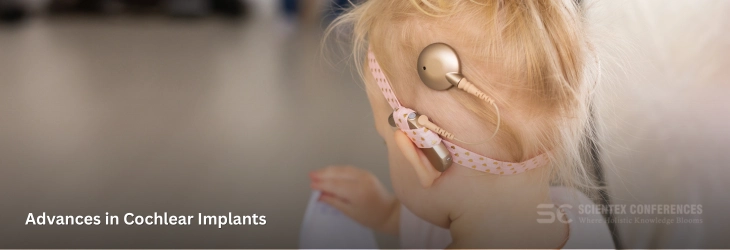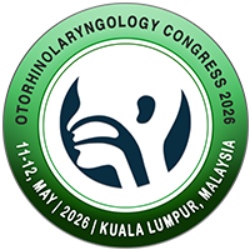Track: Advances in Cochlear Implants

Session Overview:
This session aims to provide an in-depth overview of advances in cochlear implants, highlighting the latest innovations in technology, surgical techniques, and patient outcomes. It will explore how modern cochlear implants have evolved to offer improved sound quality, speech perception, and wireless connectivity for individuals with severe to profound hearing loss. The session will also discuss expanded candidacy criteria, including implantation in younger children, older adults, and those with residual hearing.
Recent Advancement:
Recent advancements in understanding and managing cochlear implants have significantly enhanced hearing restoration for individuals with severe to profound sensorineural hearing loss. Improvements in electrode design, signal processing, and sound coding strategies have led to better speech perception, even in noisy environments. Minimally invasive surgical techniques and preservation of residual hearing now allow for hybrid devices that combine cochlear implants with hearing aids.These developments are expanding candidacy, improving outcomes, and enhancing the quality of life for cochlear implant recipients across all age groups.
Sub Tracks:
Cochlear Implants:
Cochlear implants are electronic medical devices that bypass damaged parts of the inner ear to directly stimulate the auditory nerve, providing a sense of sound to individuals with severe to profound hearing loss.
Sensorineural Hearing Loss:
Sensorineural hearing loss is caused by damage to the inner ear (cochlea) or the auditory nerve, leading to permanent hearing impairment. It is the most common type of hearing loss and often requires advanced interventions like cochlear implants when conventional hearing aids are ineffective.
Electrode Array:
The electrode array is a key component of a cochlear implant, inserted into the cochlea to deliver electrical signals directly to the auditory nerve. Advances in design have improved sound clarity and allowed for the preservation of residual hearing in many patients.
Speech Processing:
Speech processing in cochlear implants involves converting sound into digital signals that are transmitted to the electrode array, enabling the brain to interpret speech. Modern speech processors use sophisticated algorithms to enhance speech recognition, especially in noisy environments.
Minimally Invasive Surgery:
Minimally invasive surgery techniques for cochlear implantation reduce tissue damage, preserve residual hearing, and promote faster recovery. These approaches are particularly valuable in pediatric and elderly populations, where reduced surgical risk is essential.
Hybrid Cochlear Implants:
They are designed for individuals with high-frequency hearing loss but usable low-frequency hearing, offering improved speech understanding and sound quality.
Electric-Acoustic Stimulation:
Electric-acoustic stimulation (EAS) refers to the combined use of a cochlear implant and a hearing aid in the same ear to deliver both electrical and acoustic signals. EAS allows users to benefit from enhanced speech clarity and a more natural perception of sound, particularly in music and tonal languages.
Scientific Highlights
- Anatomical and Physiological Disorders of ENT
- Lung Disease Airway Issues
- ENT Infections and allergies
- New treatment Advances in Otolaryngology
- Ear & Nose plastic surgery
- Endoscopic and laparoscopic ENT surgery
- Craniofacial & Facial surgery
- Otology and Neurotology
- ENT Microsurgery
- COVID 19 and ENT
- Pediatric Otolaryngology
- Speech and Swallowing Disorders
- Head and Neck Surgery
- Airway Management & Surgery
- ENT Allergies & Immunotherapy
- Surgical Techniques in ENT
- Nasal Polyposis and Biologic Therapy
- Advances in Cochlear Implants
- Recent Advances in Otorhinolaryngology
- Vertigo and Balance Disorders


